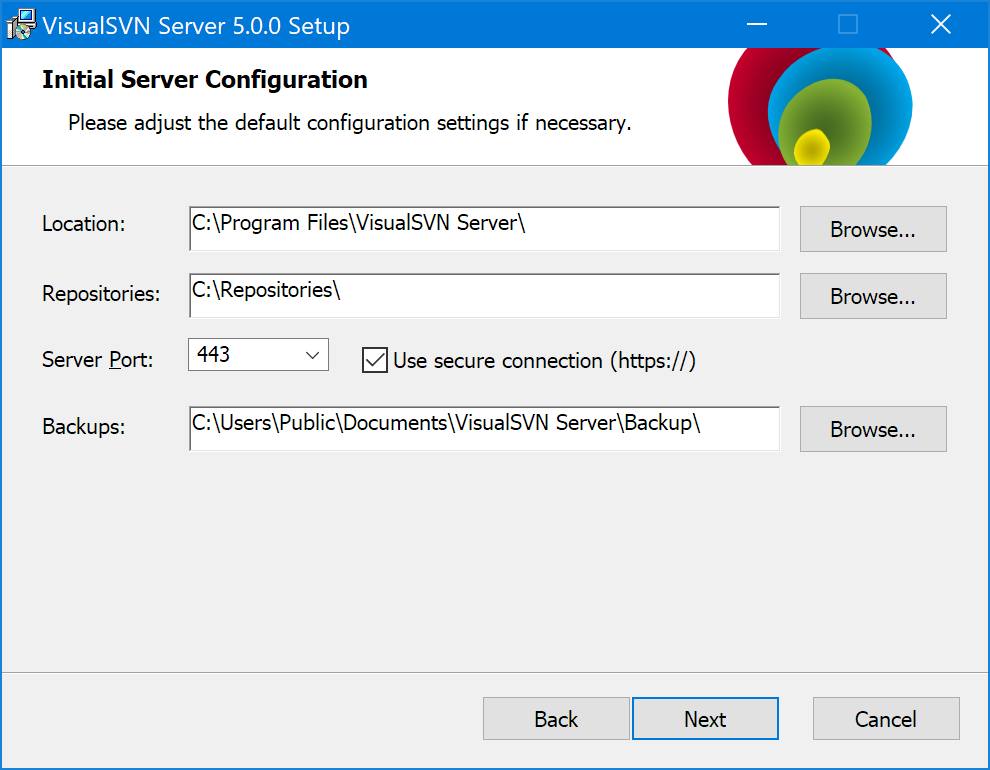

If you spring for an Enterprise license for VisualSVN Server, you even gain access to their fully integrated Windows authentication feature which removes the additional Subversion login step entirely and simply passes your Active Directory credentials to the VisualSVN server in a secure fashion. It’s an all around win for everyone involved if you choose Windows authentication. It also means any sort of restrictions/permissions you set in VisualSVN Server are done using the same user and groups objects found in your Active Directory.
#Visualsvn server download for windows password#
This means there’s one less password for users to remember and one less login/account for administrators to manage (create for new joiners, disable for leavers, etc.). In a nutshell: whatever username and password you used to login to your Windows workstation is the exact same username and password you’ll use to login to your Subversion client. will also be used to authenticate with your Subversion server via the Subversion client you and/or your developers use. If you’re not familiar with it, selecting “Use Windows authentication” means whatever credentials you use to login to your Windows workstation, servers, etc. This applies to any application you administer that has to have knowledge of users and/or groups in your organization. Support for Windows Authentication/Active Directory integrationĪs mentioned earlier, if your organization uses Active Directory for managing logins to Windows machines, then you should always select “Use Windows authentication”. If your organization uses Active Directory for managing logins to Windows machines, select “Use Windows authentication” during the VisualSVN Server installation process.Īnd for automated/unattended installations, the VisualSVN installer also provides hooks via command line arguments. You can take the default settings for just about every option and have a functional Subversion server running in less than a few minutes.Ī couple of options you’ll want to pay special attention to are the location on the filesystem where your repositories will be stored, and what type of authentication you should use.

The VisualSVN Server installation is incredibly simple.

And in most organizations, unless you were one of the earliest employees in the technology group, odds are you have little-to-no say in what the organization should use for source control. These days there are many choices when it comes to source control systems.


 0 kommentar(er)
0 kommentar(er)
